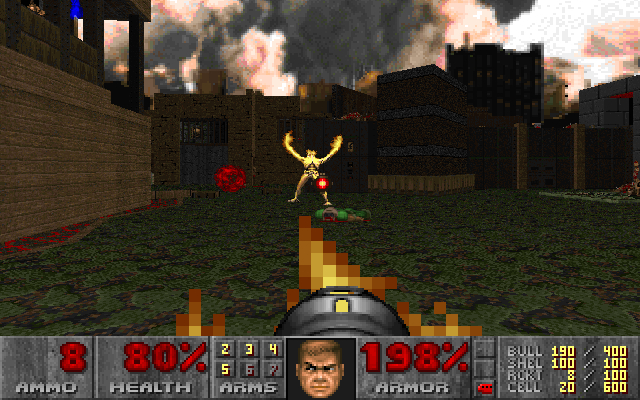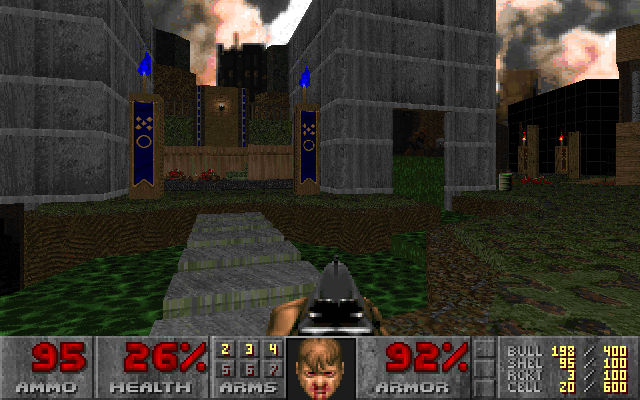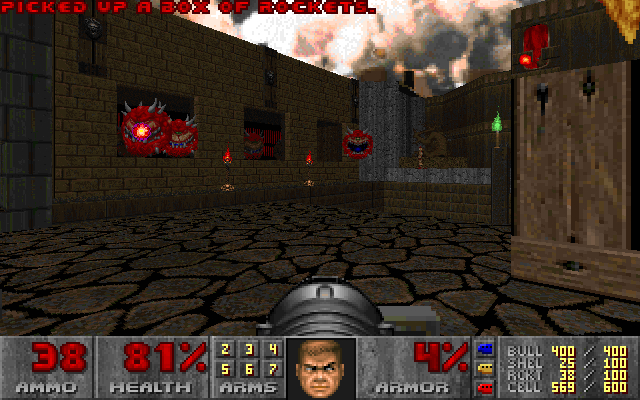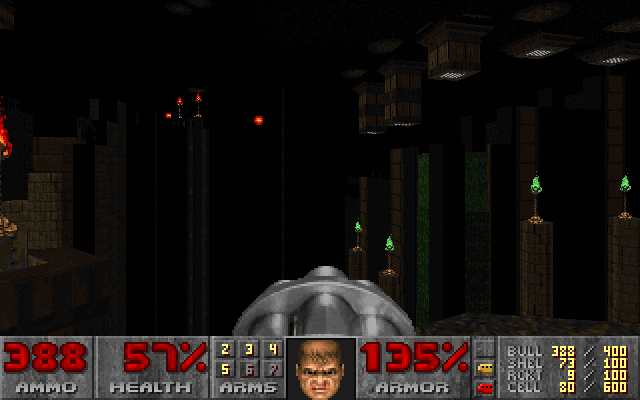
It was up in the air whether I would even write one of these thingies about High/Low 5. It’s no secret, I guess, that I wasn’t a huge fan of the later entries in Chris Hansen’s long-running WAD series. (Really, it’s been seven years since the first one!) And it just so happens that, despite my thinking High/Low 4 was the last of the bunch, a fifth and for-real-this-time final offering came out just two months after I played the other four. That may have been the reason I didn’t play it immediately; I don’t want to take up your time or mine talking about things I don’t like. There’s enough negativity on the internet, and I’d much rather this be a place for the more saccharine end of the spectrum.
So — High/Low 5. Let’s talk about that, eh?
What I’m implying is that High/Low 5 is pretty great. Awesome, even. I may have been lukewarm on some previous High/Lows, sure, but High/Low 5 is not the previous High/Lows. Any of them, really. It certainly steers clear of a lot of the mistakes of 3 and 4, but it’s also not a return to the glory days of the original two. It’s something altogether new and different. Maybe the logical evolution of ideas, taking into account the lessons learned along the way. Maybe a completely fresh approach. I’m not sure. Whatever it is, it doesn’t spend much time looking backward.
Even if Chris began to lean away from it more by 3 or 4, the older WADs were still ostensibly quite simple and straightforward in their scope. They tend to be what we’d probably call classic, and they take advantage of just the basic Doom resources. There was also a distinct openness to the level design and an element of height variation too, to justify the title. High/Low 5 is all of those things, just on a whole new level.
Though it may at first look a tad flat, there’s a lot of Fun With Height Variations to be had, especially in later areas. I hardly ever see any platforming in Doom WADs these days, but here it is in High/Low 5 — a considerable amount of it — and it’s… fun. Aside from a couple instances of the Doom engine being too slidey and sending me tumbling into a slime pit, the “jumping” puzzles are surprisingly satisfying. Not the only kind of unorthodox gameplay element thrown in, either. How often do crushers get put in levels as anything more than scenery? Well, thanks to Chris, we’ve got one of those back too.
Sure, the combat provides a great challenge, but so much of the challenge of this map is in the map itself. Which is refreshing; I mean, I swear I haven’t played a map this clever and devious and threatening since the ’90s. It’s like we all collectively got so comfortable with the game that we decided all the experimenting we could do had been done already — and only mappers like Michael Jan Krizik and now Chris Hansen are showing us how wrong we were.
That’s not even the half of it. I could also bring up that hilarious trap that uses Doom’s one and only timed-door command in probably the most inventive, intense way I’ve ever seen. Or the old each-light-in-a-hallway-turns-on-individually-as-you-walk-down-it trick — or in this case, each light turning off as you enter the area it’s lighting up… just before a trap is sprung on you in the now pitch-black room.
And Chris makes better use of Doom’s dynamic nature here than in any other map he’s done. You could call them monster closets, I suppose, but that doesn’t do them justice. Monster closets have a closed-ness, a claustrophobic and afterthought-y air to them. In High/Low 5, the areas constantly being revealed (and from which monsters happily pour out to greet you) each make the map feel more open. Walls fall away, barriers are let down, and each time, the map invites you to explore even further.
What I’d probably put forth, though, as one of High/Low 5’s greatest achievements — or at least the most immediately evident — is its take on the series’ trademark open-but-linear style. For a classic-themed WAD, the main courtyard area is absurdly complex (gorgeous too). It’s designed so that new areas are opening one after another off that main area in a strictly linear progression as you weave in and out of it, but it still feels airy and free-form. Basically, the best of both worlds.
I suppose I’d probably complain a minute, if you pressed me, that until you get the first key, it’s not really clear where you’re supposed to go. The trail of breadcrumbs is easy to follow once color-coded doors become involved; I just wish he could have made that starting point a little clearer, and maybe not thrown in so many nonfunctional doors. Granted, they are used later — to enter the hub area from other side sections — but you could have barred them off or even made them not look like doors. Just to avoid the frustration of trying them all and getting nothing out of it. That initial peevery wears off lickety-split as soon as you get into the swing of the map, and from there I dare you not to fall in love with it.
The youthful, fun-loving vibe fits strangely comfortably in the old Doom II aesthetic. High/Low 5, like each entry in the series, is themed after a chunk of original Doom maps. This time, it’s all of Doom II, meaning it has to pack thirty levels worth of style into one. Somehow, it does, with textures and thematic references to most of the memorable bits of Doom II crammed into a half-hour map. There’s even an entire sequence that plays like an homage to Romero’s legendary The Living End, and goes to yet wilder, wonderfuller places.
It ends, I suppose, as it should: with a one-on-one battle. Doomguy versus the cyberdemon, in one of the tougher cyberdemon fights I’ve played in a while. Then we plunge, for the last time, into the exit portal — into the inverted sky, in true Doom II fashion. The end — of High/Low 5 the WAD, and of High/Low the series, as I understand it. What about Chris Hansen himself?
He knocked it out of the park with this one. He even managed to please the eternal ZDoom-hater in me by making sure there weren’t any of those bugs that had plagued the previous three High/Lows, making them unplayable in anything but ZDoom. But that aside, in a lot of ways 5 really might be the highest point of the series — the most polished, the most creative, the most visually impressive. Which isn’t a surprise, given how much longer it was in development. I just hope this isn’t Chris Hansen’s farewell project — that his contributions to the Doom community don’t end with High/Low. He’s been around a long time. I hope he’s around for a long time to come, because if High/Low 5 is any indication, he only gets better with age.
(Post-post edit: Just to make me look even more like a goof, I found out immediately after I posted this that Chris Hansen has just released a new WAD. Yay!)
High/Low 5 requires DOOM2.WAD and should work in any limit-removing source port. If you’re not sure how to get it running, this may help. And for more awesome WADs, be sure to check these out — or head over to Chris Hansen’s website for the complete collection of his WADs!



